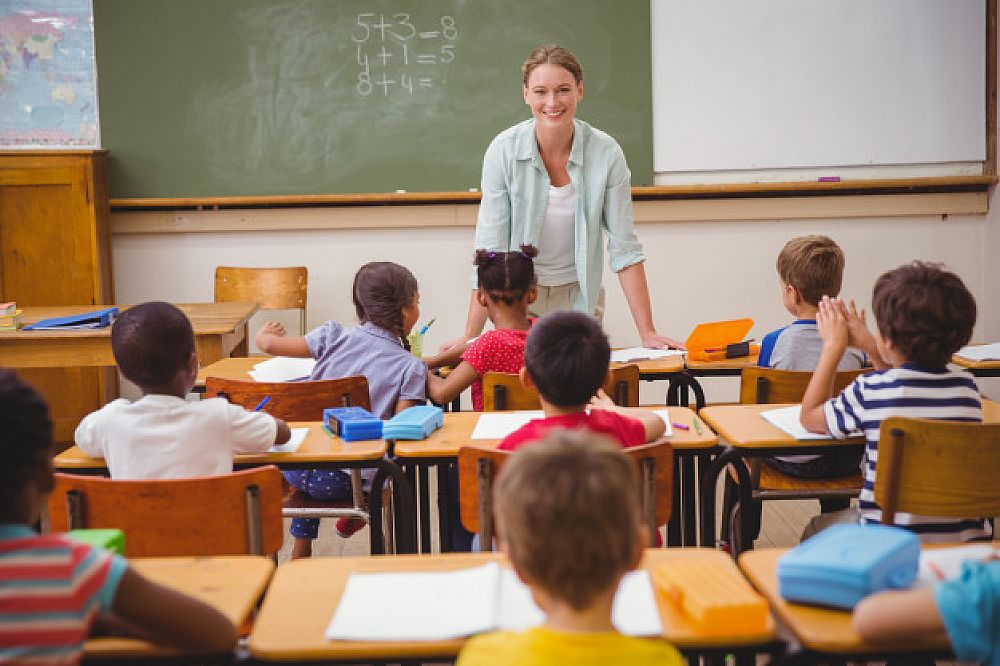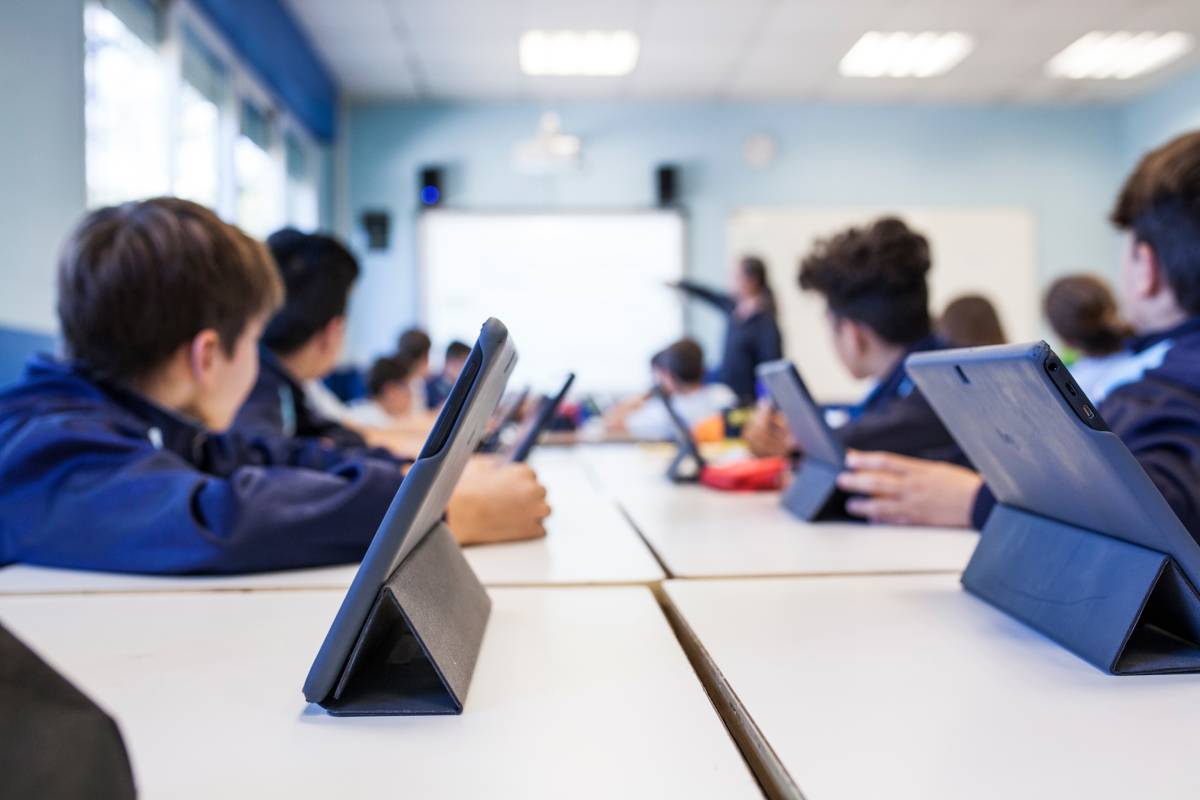Top Primary Science Tuition Singapore to Help Your Child Excel
Top Primary Science Tuition Singapore to Help Your Child Excel
Blog Article
Exploring the Different Teaching Approaches in Primary Scientific Research Education Today
The landscape of primary scientific research education is developing, with different teaching methods gaining importance in modern classrooms. Inquiry-based learning, hands-on experiments, and the combination of modern technology are redefining how instructors engage young minds. In addition, collaborative techniques and differentiated direction are being used to satisfy the diverse requirements of trainees, enhancing both interaction and understanding. As we check out these methodologies, concerns develop about their effectiveness and the ramifications for future academic practices. What might these changes in approach mean for the future generation of learners?
Inquiry-Based Understanding
Inquiry-Based Understanding (IBL) is an instructional technique that urges pupils to check out scientific ideas through doubting, investigation, and hands-on testing. This technique highlights the duty of pupils as energetic individuals in their understanding, promoting essential reasoning and analytic skills. By engaging with real-world inquiries, pupils come to be motivated and interested, which improves their understanding of scientific principles.
In IBL, educators work as facilitators, guiding pupils as they browse their inquiries as opposed to delivering information straight. This student-centered method enables differentiation, accommodating different learning paces and styles. Trainees develop abilities in creating hypotheses, designing experiments, and evaluating information, which are essential for scientific proficiency.
Furthermore, IBL cultivates partnership among students, urging them to share ideas and searchings for. This cumulative query promotes social abilities and a sense of neighborhood within the class. Moreover, the process of query urges strength, as students find out to embrace failing as a tipping stone towards understanding.
Hands-On Experiments
Hands-on experiments are a crucial component of efficient scientific research education and learning, complementing the concepts of inquiry-based learning. These experiments enable trainees to engage straight with scientific ideas, cultivating a deeper understanding with experiential learning. By controling products and observing outcomes, young learners can grasp abstract concepts in substantial ways.
Such activities advertise important thinking and problem-solving skills, as trainees assume results, conduct experiments, and analyze results. This process motivates them to ask inquiries, fine-tune their understanding, and create a clinical way of thinking. Additionally, hands-on experiments can be tailored to diverse understanding designs, ensuring that all students have the possibility to engage meaningfully with the content.
Additionally, hands-on experiments frequently motivate collaboration amongst peers, promoting team effort and communication abilities. Operating in teams makes it possible for trainees to share concepts, talk about findings, and discover from one an additional, which improves their general academic experience.
Integrating hands-on experiments into the primary science curriculum not only improves the finding out atmosphere but also grows a long-lasting rate of interest in science. By proactively taking part in their education, pupils are more probable to create an interest for clinical inquiry that expands beyond the class.

Modern Technology Integration
Integrating modern technology into primary science education and learning has come to be increasingly vital in cultivating pupil involvement and enhancing discovering results. The usage of electronic devices, such as interactive simulations, virtual labs, and educational software application, supplies pupils with possibilities to discover clinical principles in innovative ways. These sources help with a deeper understanding of complicated subjects by permitting learners to picture and control variables that would be unwise in a standard classroom setting.
Additionally, innovation integration encourages personalized discovering experiences. Pupils can progress at their very own speed, reviewing challenging principles via multimedia sources, which deal with different knowing styles. This adaptability not just sustains specific development however also grows a sense of freedom in learners.
Additionally, innovation acts as a bridge to real-world science, attaching students with present research study and expert payments. Accessibility to on the internet databases and clinical journals expands students' perspectives on clinical inquiry and fosters vital thinking abilities.
Collaborative Discovering
Collaborative learning plays a vital duty in primary scientific research education by fostering teamwork and interaction skills among trainees. This method encourages students to function together, share understanding, and take part in analytical, which boosts their understanding of scientific principles. By joining group activities, trainees learn to articulate their concepts, pay attention to varied point of views, and negotiate options, every one of which are crucial abilities in both real-world and scholastic contexts.

Research shows that joint learning can cause enhanced motivation and involvement in scientific research subjects, as trainees locate pleasure in common experiences (primary science tuition Singapore). Additionally, this technique prepares pupils for future collective undertakings, equipping them with go to website the skills essential for effective teamwork in college and expert settings. Ultimately, embracing collaborative understanding in primary science education and learning can considerably improve the understanding experience and promote a deeper understanding of scientific query
Set Apart Direction

Separated guideline can materialize in various methods, such as differing the material, procedures, or products of learning. As an example, teachers may make use of tiered projects that supply varying levels of intricacy, allowing trainees to operate at their respective readiness degrees. Additionally, versatile organizing strategies can help with partnership among pupils with various capabilities, cultivating peer understanding.
Assessment plays an important function in this method, as it notifies guideline and aids teachers comprehend each pupil's unique requirements. Formative evaluations, such as monitorings and tests, can assist educators in readjusting their approaches to boost finding out end results. primary science tuition Singapore. Ultimately, by executing distinguished instruction in primary scientific research education, teachers can cultivate a more equitable and effective discovering environment, encouraging all pupils to reach their complete potential in recognizing clinical sensations
Final Thought
In summary, the diverse teaching strategies in main science education, consisting of inquiry-based understanding, hands-on experiments, modern technology combination, collaborative learning, and differentiated guideline, jointly contribute to a more reliable learning setting. These techniques promote vital thinking, analytic skills, and a much deeper comprehension of scientific principles. By executing these strategies, instructors can create supportive and interesting classrooms that resolve the different demands of trainees, ultimately promoting a lifelong passion in science and boosting academic achievement.
Inquiry-Based Knowing (IBL) is an instructional method that urges pupils to explore clinical concepts with wondering about, investigation, and hands-on trial and error.Collaborative understanding plays an important duty in primary scientific research education and learning by fostering synergy and interaction abilities among trainees.Study indicates that collaborative understanding can lead to this contact form enhanced inspiration and involvement in science subjects, as trainees find pleasure in common experiences.In cultivating an inclusive knowing environment, differentiated instruction emerges as a crucial strategy to accommodate the diverse demands and abilities of pupils in key science education. Eventually, by applying differentiated direction in key science education, instructors can grow a more equitable and effective learning atmosphere, equipping all trainees to reach their complete capacity in recognizing clinical phenomena.
Report this page